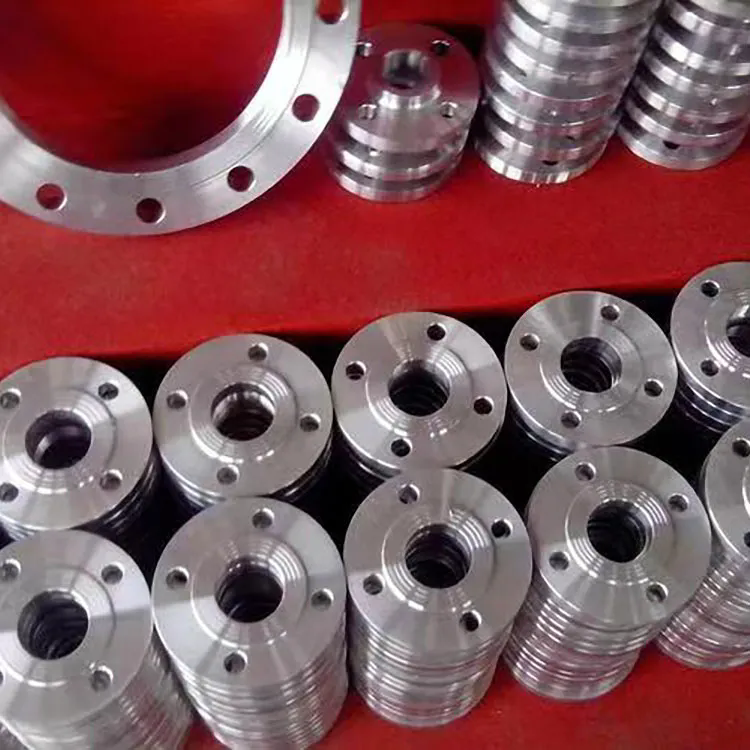The Essential Guide to Flanged Pipe Fittings: Key Components for Reliable Piping Systems
2024-08-23
In the world of plumbing and industrial piping, flanged pipe fittings play a crucial role in ensuring the integrity and functionality of piping systems. These fittings provide a secure, leak-proof connection between pipes and other components, making them indispensable in a wide range of applications. In this blog, we will explore what flanged pipe fittings are, how they work, their benefits, and their applications in various industries.
What Are Flanged Pipe Fittings?
Flanged pipe fittings are components used to connect pipes, valves, and other equipment in a piping system. They feature a flange, which is a flat, disc-like plate with holes for bolts or screws. Flanges are used to join pipes or other fittings by bolting them together, creating a secure and stable connection.
Flanged pipe fittings come in various materials, including steel, stainless steel, cast iron, and plastic, to accommodate different needs and environments. The choice of material depends on factors such as the type of fluid being transported, the operating pressure, and environmental conditions.
How Do Flanged Pipe Fittings Work?
Flanged pipe fittings work by creating a mechanical connection between two or more components. Here’s how they function:
1. Flange Design: Each flange consists of a circular plate with holes arranged in a specific pattern. These holes align with corresponding holes on the other flange or fitting.
2. Gasket Placement: A gasket is placed between the two flanges to create a seal. The gasket material is chosen based on the type of fluid and the operating conditions. Common gasket materials include rubber, PTFE, and graphite.
3. Bolting: Bolts or screws are inserted through the holes in the flanges and tightened. This compresses the gasket and creates a tight seal, preventing leaks and ensuring a secure connection.
4. Pressure Management: Flanged connections are designed to handle various pressure levels. The strength of the flanges and the quality of the gasket are critical in maintaining the integrity of the connection under pressure.
Benefits of Flanged Pipe Fittings
1. Ease of Installation: Flanged pipe fittings are relatively easy to install and remove. This makes them ideal for systems that require regular maintenance or modifications. The ability to disassemble and reassemble the connection without cutting or welding simplifies the process.
2. Leak Prevention: The use of gaskets and the bolted connection create a reliable seal that minimizes the risk of leaks. This is particularly important in systems where leakage could lead to safety hazards or environmental damage.
3. Versatility: Flanged pipe fittings are available in a wide range of sizes, materials, and pressure ratings, making them suitable for diverse applications. They can be used in various industries, including oil and gas, water treatment, chemical processing, and more.
4. Strength and Durability: The bolted connection provides a strong and durable link between pipes and equipment. Flanged fittings can withstand high pressures and temperatures, ensuring long-term reliability in demanding environments.
5. Accessibility: The design of flanged fittings allows for easy access to the connected components. This is beneficial for inspection, cleaning, or replacement without having to dismantle the entire piping system.
Applications of Flanged Pipe Fittings
1. Oil and Gas Industry: Flanged pipe fittings are widely used in the oil and gas industry to connect pipelines, valves, and other equipment. They are designed to handle high pressures and corrosive substances, making them essential for transporting oil, gas, and other fluids.
2. Water Treatment Plants: In water treatment facilities, flanged fittings are used to connect pipes, pumps, and filters. Their leak-proof design ensures the safe and efficient handling of water and wastewater.
3. Chemical Processing: The chemical industry relies on flanged pipe fittings to connect equipment and transport chemicals. The materials and gaskets used in these fittings are selected to resist corrosion and chemical reactions.
4. HVAC Systems: In heating, ventilation, and air conditioning (HVAC) systems, flanged fittings are used to connect ductwork, pumps, and other components. They provide a reliable connection that can handle varying pressures and temperatures.
5. Power Generation: Flanged fittings are used in power plants to connect pipelines and equipment for steam, water, and other fluids. Their ability to withstand high pressures and temperatures is critical for the safe and efficient operation of power generation systems.
Choosing the Right Flanged Pipe Fitting
When selecting flanged pipe fittings for your application, consider the following factors:
1. Material: Choose a material that is compatible with the fluid being transported and the operating environment. Common materials include carbon steel, stainless steel, cast iron, and plastic.
2. Size and Pressure Rating: Ensure that the flanged fitting’s size and pressure rating match the requirements of your piping system. This will ensure a proper fit and reliable performance.
3. Gasket Material: Select a gasket material that is suitable for the type of fluid and the operating conditions. The gasket should provide a tight seal and resist deterioration over time.
4. Flange Standard: Different industries and regions may use different flange standards, such as ANSI, DIN, or JIS. Ensure that the flanged fittings you choose comply with the relevant standards for your application.
5. Compatibility: Verify that the flanged fittings are compatible with other components in your system, including pipes, valves, and equipment.
Conclusion
Flanged pipe fittings are essential components for creating secure and reliable connections in piping systems. Their ease of installation, leak prevention, and versatility make them a popular choice across various industries, from oil and gas to water treatment and HVAC systems. By understanding how flanged fittings work, their benefits, and how to choose the right ones for your application, you can ensure the efficiency and safety of your piping systems. Investing in high-quality flanged pipe fittings helps to maintain the integrity of your connections and support the smooth operation of your systems.



